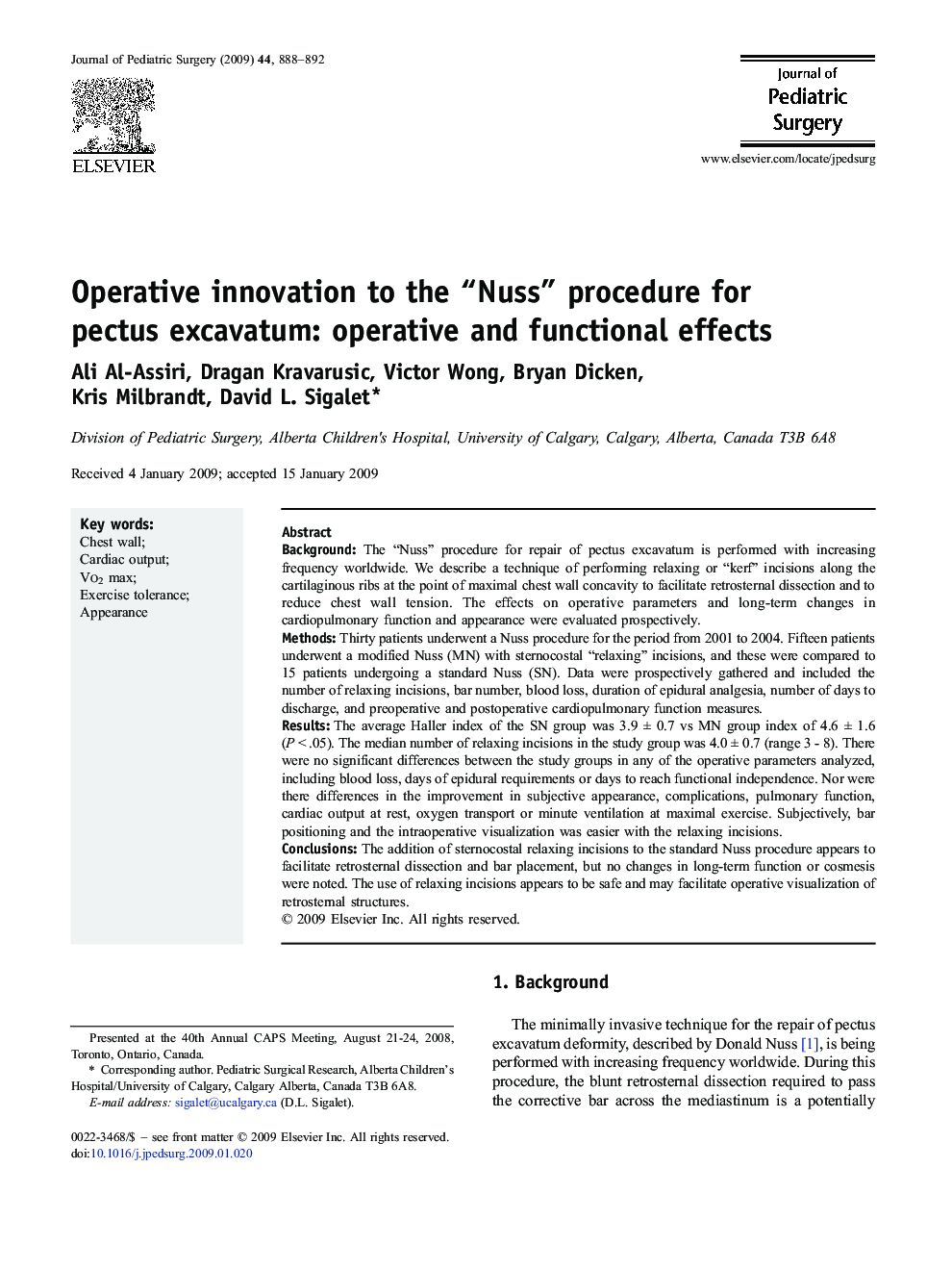| کد مقاله | کد نشریه | سال انتشار | مقاله انگلیسی | نسخه تمام متن |
|---|---|---|---|---|
| 4158481 | 1273812 | 2009 | 5 صفحه PDF | دانلود رایگان |

BackgroundThe “Nuss” procedure for repair of pectus excavatum is performed with increasing frequency worldwide. We describe a technique of performing relaxing or “kerf” incisions along the cartilaginous ribs at the point of maximal chest wall concavity to facilitate retrosternal dissection and to reduce chest wall tension. The effects on operative parameters and long-term changes in cardiopulmonary function and appearance were evaluated prospectively.MethodsThirty patients underwent a Nuss procedure for the period from 2001 to 2004. Fifteen patients underwent a modified Nuss (MN) with sternocostal “relaxing” incisions, and these were compared to 15 patients undergoing a standard Nuss (SN). Data were prospectively gathered and included the number of relaxing incisions, bar number, blood loss, duration of epidural analgesia, number of days to discharge, and preoperative and postoperative cardiopulmonary function measures.ResultsThe average Haller index of the SN group was 3.9 ± 0.7 vs MN group index of 4.6 ± 1.6 (P < .05). The median number of relaxing incisions in the study group was 4.0 ± 0.7 (range 3 - 8). There were no significant differences between the study groups in any of the operative parameters analyzed, including blood loss, days of epidural requirements or days to reach functional independence. Nor were there differences in the improvement in subjective appearance, complications, pulmonary function, cardiac output at rest, oxygen transport or minute ventilation at maximal exercise. Subjectively, bar positioning and the intraoperative visualization was easier with the relaxing incisions.ConclusionsThe addition of sternocostal relaxing incisions to the standard Nuss procedure appears to facilitate retrosternal dissection and bar placement, but no changes in long-term function or cosmesis were noted. The use of relaxing incisions appears to be safe and may facilitate operative visualization of retrosternal structures.
Journal: Journal of Pediatric Surgery - Volume 44, Issue 5, May 2009, Pages 888–892